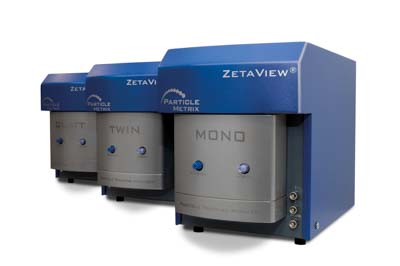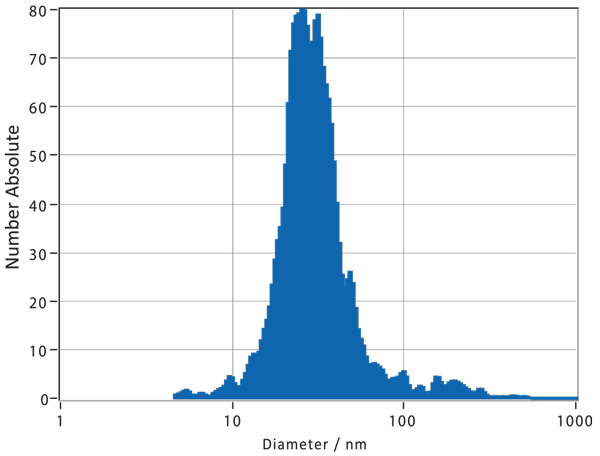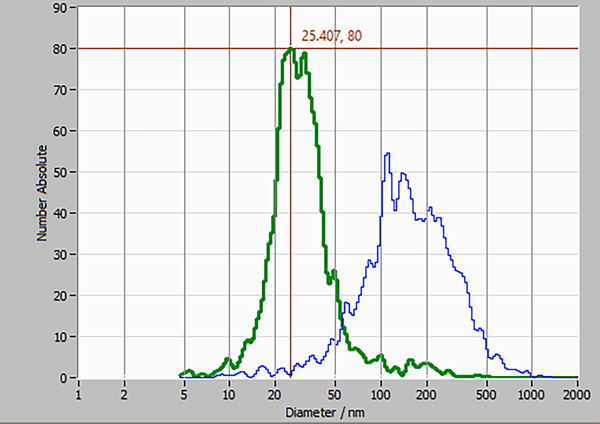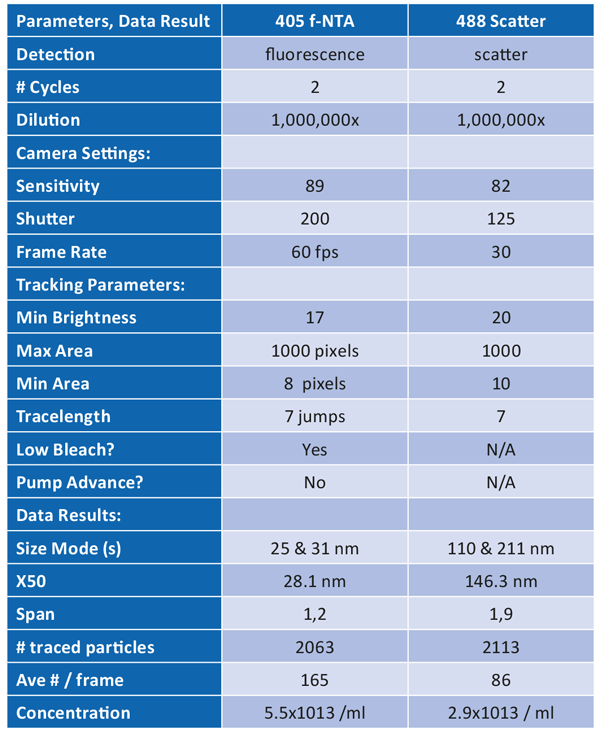+49 (0)8143-99172-0
Headquarter
+49 (0)8143-99172-22
Support


0x consumables
5x faster switching
10x faster cleaning
12x fluorescence channels
∞x statistics
…and much more!

We measure your products in a measuring range of 0.8 nm to 300 μm, if possible in original concentration
While it is uncertain how far the NTA community is able to push the limits of current technology in order to detect the smallest possible nanoparticles, the results of analyzing 25 nm quantum dots functionalized with streptavidin (S-QDs) show that the ZetaView® QUATT system from Particle Metrix is the leader in fluorescence detection capabilities using NTA methods.
Vendor Sample ID: Invitrogen™ Qdot™ 655 streptavidin conjugates
Keywords: Nanoparticle Tracking Analysis (NTA), fluorescence, f-NTA, QDs, quantum dot, S-QDs
The first phase of these experiments involved setting up a reasonably robust SOP for detecting the 25 nm S-QDs in scatter mode. It quickly became apparent that the number of large particles present was quite substantial, and that the tracking efficiency of building a particle size distribution (PSD) to include S-QDs would be poor, due to an abundant level of scatter noise (results not shown). Instead, the camera settings & tracking parameters were decreased in order to tune out the smaller S-QDs, preferentially measuring the larger ones.
The properties of Invitrogen™ Qdot™ 655 streptavidin fit very well using a 405 nm laser & 430 nm high-pass filter from our QUATT system; an SOP was quickly and easily determined by starting with parameters from a scatter SOP for S-QDs, then adjusting the camera, followed by using our low-bleach method to reduce laser exposure to the sample. Bleaching was not an issue, yet data acquisition was still improved with our low bleach function. This SOP is robust, meaning the results did not differ significantly with minor adjustment of tracking parameters.
The PSD from fluorescence-NTA analysis turned out quite clean (i.e., low noise), as compared with the scatter mode analysis, where the larger particles do not appear in fluorescence mode. These factors indicate the two detection modes are measuring two different populations of particles, as shown in an overlay of both PSDs. Clearly, we see different size profiles from these two analyses of one single sample volume. Notably, the number concentration of the larger, non-fluorescent particles in scatter mode is almost as abundant as the S-QDs from f-NTA mode.
Size and concentration measurements:



Disclaimer: While we have taken every care to ensure that the information in this document is correct, nothing herein should be construed as implying any representation or warranty as to its accuracy, correctness or completeness of this information and we shall not be held liable for any errors therein or for any damages in connection with the use of this material. Particle Metrix reserves the right to change the content of this material at any time without notice.
Copyright: © April 2024 Particle Metrix. This publication or parts thereof may not be copied or distributed without our express written permission.
Headquarter
Support
Opt-out complete; your visits to this website will not be recorded by the Web Analytics tool. Note that if you clear your cookies, delete the opt-out cookie, or if you change computers or Web browsers, you will need to perform the opt-out procedure again.
You may choose to prevent this website from aggregating and analyzing the actions you take here. Doing so will protect your privacy, but will also prevent the owner from learning from your actions and creating a better experience for you and other users.
The tracking opt-out feature requires cookies to be enabled.